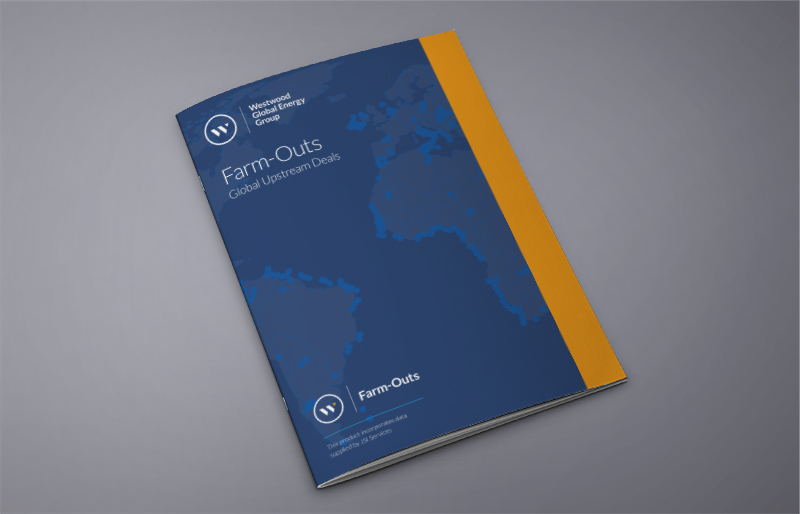- A new report from Westwood Global Energy Group and its partner, JSI Services, shows a significant slow-down in companies buying into exploration wells through farm-ins.
- With lower costs, farm-ins now look like a more attractive way to boost reserves for those expecting a recovery in the oil price.
Success rates in wells subject to farm-in were found to be lower than average exploration success, so companies need to be smarter about the choice of project to buy into.
(Aberdeen, UK) – 07 November 2017 – Westwood Global Energy Group (Westwood), the energy market research consultancy, and its partner JSI Services have published an independent analysis of the global farm-outs market2 for the last 10 years.
The new report covers the period 2007-2016, during which 937 offshore deals and 835 onshore deals were announced.
Its analysis reveals that:
- Over the last 10 years, 1,134 wells were drilled on completed farm-outs with an average commercial discovery rate of 18 per cent and farm-in finding costs of $3/boe.
- This compares to an average success rate of 31 per cent and finding cost of $1/boe for all exploration wells drilled in the period.
- Over the decade, there was a significant downturn in both the number and value of deals with 2016 being the lowest point – with fewer deals completed than in 2002, when the oil price was $23 per barrel.
- The average promote3 agreed in 2016 was 1.4 to 1 with an access cost of $580k per percentage point offshore and 1.7 to 1 with $120k per percentage point onshore.
The analysis is based on JSI’s unrivalled database of farm-outs which contains 17 years’ worth of information and analysis, with 20 new opportunities being added every month. JSI and Westwood have come together to offer online access to the database which enables users to review the viability of potential deals and compare vital information such as deal costs and the level of promote. It also contains quarterly summaries of deal activities and twice-yearly analysis of regional trends, saving E&P companies considerable search time.
Joe Staffurth, Managing Director of JSI Services, comments: “Like the rest of the exploration market, farm-outs have hit a trough in recent years. But whilst the market may be at a low ebb, we still see considerable opportunities for E&P companies who are willing to take a longer-term outlook.
“Drilling and seismic costs have come down to the level where exploration economics look attractive. Deal terms are also low, so farming-in is cheap and companies can re-position their portfolios at low cost. There are still plenty of deals to be done, particularly for acreage with a healthy portfolio of prospects with low pre-drill risk profiles.”
“The success rate for wells drilled on prospects subject to a farm-in are below the normal exploration average and companies needed to be smarter in the prospects they chose to buy into. Our online research provides them with vital information to make sense of the market and reduce the time it takes to identify the deals that will create value.”
To book a demonstration of the Farm-outs database, visit: https://www.westwoodenergy.com/research/farm-out/
1 Farm-outs explained
Farm-outs are a vital part of the oil & gas industry. A farm-out is an agreement entered into by the owner of an oil, gas or mineral lease (the farmor) and another company (the farmee) who wishes to obtain a percentage of ownership of the leases in exchange for services such as testing or drilling. The benefit to the farmor is that it maintains its ownership of the lease and obtains production with less expenditure and risk, whilst the farmee obtains acreage and potential profits.
2 JSI’s Farm-outs database analyses all international markets outside the US and Canada
3 “Promote” explained
When a farm-out is agreed the incoming party usually pays a premium to enter the acreage. That premium can be in the form of back costs (these are costs incurred by the seller on the license up to the point of sale), cash or a carry (the proportion of the seller’s future costs that the buyer will pay in addition to the buyers own share of future costs) on future work. The premium paid is called the “Promote” (if no premium is paid it is defined as “ground floor”).
Though more deals have been done recently at ground floor with no promote it is normal, historically, for companies to pay significantly more than their own costs to enter someone else’s acreage. The level of promote is shown as a ratio thus 1.4 to 1 means the company will pay 1.4 per cent of the costs to earn each 1 per cent of the interest (typically they may earn 50 to 80 per cent of the total).




